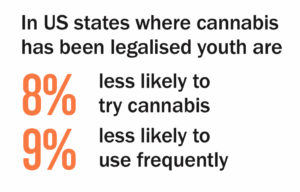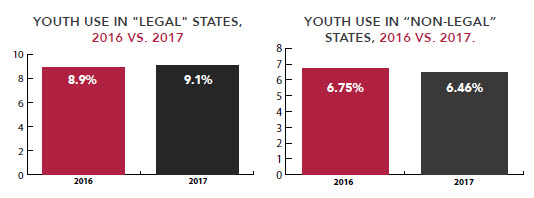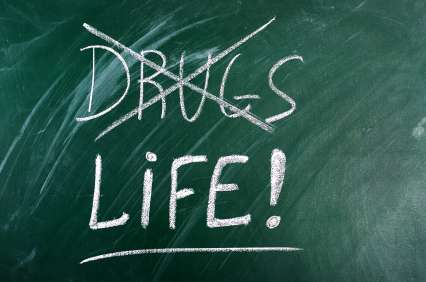
City Journal – Spring 1997
There is a progression in the minds of men: first the unthinkable becomes thinkable, and then it becomes an orthodoxy whose truth seems so obvious that no one remembers that anyone ever thought differently. This is just what is happening with the idea of legalizing drugs: it has reached the stage when millions of thinking men are agreed that allowing people to take whatever they like is the obvious, indeed only, solution to the social problems that arise from the consumption of drugs.
Man’s desire to take mind-altering substances is as old as society itself—as are attempts to regulate their consumption. If intoxication in one form or another is inevitable, then so is customary or legal restraint upon that intoxication. But no society until our own has had to contend with the ready availability of so many different mind-altering drugs, combined with a citizenry jealous of its right to pursue its own pleasures in its own way.
The arguments in favor of legalizing the use of all narcotic and stimulant drugs are twofold: philosophical and pragmatic. Neither argument is negligible, but both are mistaken, I believe, and both miss the point.
The philosophic argument is that, in a free society, adults should be permitted to do whatever they please, always provided that they are prepared to take the consequences of their own choices and that they cause no direct harm to others. The locus classicus for this point of view is John Stuart Mill’s famous essay On Liberty: “The only purpose for which power can be rightfully exercised over any member of the community, against his will, is to prevent harm to others,” Mill wrote. “His own good, either physical or moral, is not a sufficient warrant.” This radical individualism allows society no part whatever in shaping, determining, or enforcing a moral code: in short, we have nothing in common but our contractual agreement not to interfere with one another as we go about seeking our private pleasures.
In practice, of course, it is exceedingly difficult to make people take all the consequences of their own actions—as they must, if Mill’s great principle is to serve as a philosophical guide to policy. Addiction to, or regular use of, most currently prohibited drugs cannot affect only the person who takes them—and not his spouse, children, neighbors, or employers. No man, except possibly a hermit, is an island; and so it is virtually impossible for Mill’s principle to apply to any human action whatever, let alone shooting up heroin or smoking crack. Such a principle is virtually useless in determining what should or should not be permitted.
Perhaps we ought not be too harsh on Mill’s principle: it’s not clear that anyone has ever thought of a better one. But that is precisely the point. Human affairs cannot be decided by an appeal to an infallible rule, expressible in a few words, whose simple application can decide all cases, including whether drugs should be freely available to the entire adult population. Philosophical fundamentalism is not preferable to the religious variety; and because the desiderata of human life are many, and often in conflict with one another, mere philosophical inconsistency in policy—such as permitting the consumption of alcohol while outlawing cocaine—is not a sufficient argument against that policy. We all value freedom, and we all value order; sometimes we sacrifice freedom for order, and sometimes order for freedom. But once a prohibition has been removed, it is hard to restore, even when the newfound freedom proves to have been ill-conceived and socially disastrous.
Even Mill came to see the limitations of his own principle as a guide for policy and to deny that all pleasures were of equal significance for human existence. It was better, he said, to be Socrates discontented than a fool satisfied. Mill acknowledged that some goals were intrinsically worthier of pursuit than others.
This being the case, not all freedoms are equal, and neither are all limitations of freedom: some are serious and some trivial. The freedom we cherish—or should cherish—is not merely that of satisfying our appetites, whatever they happen to be. We are not Dickensian Harold Skimpoles, exclaiming in protest that “Even the butterflies are free!” We are not children who chafe at restrictions because they are restrictions. And we even recognize the apparent paradox that some limitations to our freedoms have the consequence of making us freer overall. The freest man is not the one who slavishly follows his appetites and desires throughout his life—as all too many of my patients have discovered to their cost.
We are prepared to accept limitations to our freedoms for many reasons, not just that of public order. Take an extreme hypothetical case: public exhibitions of necrophilia are quite rightly not permitted, though on Mill’s principle they should be. A corpse has no interests and cannot be harmed, because it is no longer a person; and no member of the public is harmed if he has agreed to attend such an exhibition.
Our resolve to prohibit such exhibitions would not be altered if we discovered that millions of people wished to attend them or even if we discovered that millions already were attending them illicitly. Our objection is not based upon pragmatic considerations or upon a head count: it is based upon the wrongness of the would-be exhibitions themselves. The fact that the prohibition represents a genuine restriction of our freedom is of no account.
It might be argued that the freedom to choose among a variety of intoxicating substances is a much more important freedom and that millions of people have derived innocent fun from taking stimulants and narcotics. But the consumption of drugs has the effect of reducing men’s freedom by circumscribing the range of their interests. It impairs their ability to pursue more important human aims, such as raising a family and fulfilling civic obligations. Very often it impairs their ability to pursue gainful employment and promotes parasitism. Moreover, far from being expanders of consciousness, most drugs severely limit it. One of the most striking characteristics of drug takers is their intense and tedious self-absorption; and their journeys into inner space are generally forays into inner vacuums. Drug taking is a lazy man’s way of pursuing happiness and wisdom, and the shortcut turns out to be the deadest of dead ends. We lose remarkably little by not being permitted to take drugs.
The idea that freedom is merely the ability to act upon one’s whims is surely very thin and hardly begins to capture the complexities of human existence; a man whose appetite is his law strikes us not as liberated but enslaved. And when such a narrowly conceived freedom is made the touchstone of public policy, a dissolution of society is bound to follow. No culture that makes publicly sanctioned self-indulgence its highest good can long survive: a radical egotism is bound to ensue, in which any limitations upon personal behavior are experienced as infringements of basic rights. Distinctions between the important and the trivial, between the freedom to criticize received ideas and the freedom to take LSD, are precisely the standards that keep societies from barbarism.
So the legalization of drugs cannot be supported by philosophical principle. But if the pragmatic argument in favor of legalization were strong enough, it might overwhelm other objections. It is upon this argument that proponents of legalization rest the larger part of their case.
The argument is that the overwhelming majority of the harm done to society by the consumption of currently illicit drugs is caused not by their pharmacological properties but by their prohibition and the resultant criminal activity that prohibition always calls into being. Simple reflection tells us that a supply invariably grows up to meet a demand; and when the demand is widespread, suppression is useless. Indeed, it is harmful, since—by raising the price of the commodity in question—it raises the profits of middlemen, which gives them an even more powerful incentive to stimulate demand further. The vast profits to be made from cocaine and heroin—which, were it not for their illegality, would be cheap and easily affordable even by the poorest in affluent societies—exert a deeply corrupting effect on producers, distributors, consumers, and law enforcers alike. Besides, it is well known that illegality in itself has attractions for youth already inclined to disaffection. Even many of the harmful physical effects of illicit drugs stem from their illegal status: for example, fluctuations in the purity of heroin bought on the street are responsible for many of the deaths by overdose. If the sale and consumption of such drugs were legalized, consumers would know how much they were taking and thus avoid overdoses.
Moreover, since society already permits the use of some mind-altering substances known to be both addictive and harmful, such as alcohol and nicotine, in prohibiting others it appears hypocritical, arbitrary, and dictatorial. Its hypocrisy, as well as its patent failure to enforce its prohibitions successfully, leads inevitably to a decline in respect for the law as a whole. Thus things fall apart, and the center cannot hold.
It stands to reason, therefore, that all these problems would be resolved at a stroke if everyone were permitted to smoke, swallow, or inject anything he chose. The corruption of the police, the luring of children of 11 and 12 into illegal activities, the making of such vast sums of money by drug dealing that legitimate work seems pointless and silly by comparison, and the turf wars that make poor neighborhoods so exceedingly violent and dangerous, would all cease at once were drug taking to be decriminalized and the supply regulated in the same way as alcohol.
But a certain modesty in the face of an inherently unknowable future is surely advisable. That is why prudence is a political virtue: what stands to reason should happen does not necessarily happen in practice. As Goethe said, all theory (even of the monetarist or free-market variety) is gray, but green springs the golden tree of life. If drugs were legalized, I suspect that the golden tree of life might spring some unpleasant surprises.
It is of course true, but only trivially so, that the present illegality of drugs is the cause of the criminality surrounding their distribution. Likewise, it is the illegality of stealing cars that creates car thieves. In fact, the ultimate cause of all criminality is law. As far as I am aware, no one has ever suggested that law should therefore be abandoned. Moreover, the impossibility of winning the “war” against theft, burglary, robbery, and fraud has never been used as an argument that these categories of crime should be abandoned. And so long as the demand for material goods outstrips supply, people will be tempted to commit criminal acts against the owners of property. This is not an argument, in my view, against private property or in favor of the common ownership of all goods. It does suggest, however, that we shall need a police force for a long time to come.
In any case, there are reasons to doubt whether the crime rate would fall quite as dramatically as advocates of legalization have suggested. Amsterdam, where access to drugs is relatively unproblematic, is among the most violent and squalid cities in Europe. The idea behind crime—of getting rich, or at least richer, quickly and without much effort—is unlikely to disappear once drugs are freely available to all who want them. And it may be that officially sanctioned antisocial behavior—the official lifting of taboos—breeds yet more antisocial behavior, as the “broken windows” theory would suggest.
Having met large numbers of drug dealers in prison, I doubt that they would return to respectable life if the principal article of their commerce were to be legalized. Far from evincing a desire to be reincorporated into the world of regular work, they express a deep contempt for it and regard those who accept the bargain of a fair day’s work for a fair day’s pay as cowards and fools. A life of crime has its attractions for many who would otherwise lead a mundane existence. So long as there is the possibility of a lucrative racket or illegal traffic, such people will find it and extend its scope. Therefore, since even legalizers would hesitate to allow children to take drugs, decriminalization might easily result in dealers turning their attentions to younger and younger children, who—in the permissive atmosphere that even now prevails—have already been inducted into the drug subculture in alarmingly high numbers.
Those who do not deal in drugs but commit crimes to fund their consumption of them are, of course, more numerous than large-scale dealers. And it is true that once opiate addicts, for example, enter a treatment program, which often includes maintenance doses of methadone, the rate at which they commit crimes falls markedly. The drug clinic in my hospital claims an 80 percent reduction in criminal convictions among heroin addicts once they have been stabilized on methadone.
This is impressive, but it is not certain that the results should be generalized. First, the patients are self-selected: they have some motivation to change, otherwise they would not have attended the clinic in the first place. Only a minority of addicts attend, and therefore it is not safe to conclude that, if other addicts were to receive methadone, their criminal activity would similarly diminish.
Second, a decline in convictions is not necessarily the same as a decline in criminal acts. If methadone stabilizes an addict’s life, he may become a more efficient, harder-to-catch criminal. Moreover, when the police in our city do catch an addict, they are less likely to prosecute him if he can prove that he is undergoing anything remotely resembling psychiatric treatment. They return him directly to his doctor. Having once had a psychiatric consultation is an all-purpose alibi for a robber or a burglar; the police, who do not want to fill in the 40-plus forms it now takes to charge anyone with anything in England, consider a single contact with a psychiatrist sufficient to deprive anyone of legal responsibility for crime forever.
Third, the rate of criminal activity among those drug addicts who receive methadone from the clinic, though reduced, remains very high. The deputy director of the clinic estimates that the number of criminal acts committed by his average patient (as judged by self-report) was 250 per year before entering treatment and 50 afterward. It may well be that the real difference is considerably less than this, because the patients have an incentive to exaggerate it to secure the continuation of their methadone. But clearly, opiate addicts who receive their drugs legally and free of charge continue to commit large numbers of crimes. In my clinics in prison, I see numerous prisoners who were on methadone when they committed the crime for which they are incarcerated.
Why do addicts given their drug free of charge continue to commit crimes? Some addicts, of course, continue to take drugs other than those prescribed and have to fund their consumption of them. So long as any restriction whatever regulates the consumption of drugs, many addicts will seek them illicitly, regardless of what they receive legally. In addition, the drugs themselves exert a long-term effect on a person’s ability to earn a living and severely limit rather than expand his horizons and mental repertoire. They sap the will or the ability of an addict to make long-term plans. While drugs are the focus of an addict’s life, they are not all he needs to live, and many addicts thus continue to procure the rest of what they need by criminal means.
For the proposed legalization of drugs to have its much vaunted beneficial effect on the rate of criminality, such drugs would have to be both cheap and readily available. The legalizers assume that there is a natural limit to the demand for these drugs, and that if their consumption were legalized, the demand would not increase substantially. Those psychologically unstable persons currently taking drugs would continue to do so, with the necessity to commit crimes removed, while psychologically stabler people (such as you and I and our children) would not be enticed to take drugs by their new legal status and cheapness. But price and availability, I need hardly say, exert a profound effect on consumption: the cheaper alcohol becomes, for example, the more of it is consumed, at least within quite wide limits.
I have personal experience of this effect. I once worked as a doctor on a British government aid project to Africa. We were building a road through remote African bush. The contract stipulated that the construction company could import, free of all taxes, alcoholic drinks from the United Kingdom. These drinks the company then sold to its British workers at cost, in the local currency at the official exchange rate, which was approximately one-sixth the black-market rate. A liter bottle of gin thus cost less than a dollar and could be sold on the open market for almost ten dollars. So it was theoretically possible to remain dead drunk for several years for an initial outlay of less than a dollar.
Of course, the necessity to go to work somewhat limited the workers’ consumption of alcohol. Nevertheless, drunkenness among them far outstripped anything I have ever seen, before or since. I discovered that, when alcohol is effectively free of charge, a fifth of British construction workers will regularly go to bed so drunk that they are incontinent both of urine and feces. I remember one man who very rarely got as far as his bed at night: he fell asleep in the lavatory, where he was usually found the next morning. Half the men shook in the mornings and resorted to the hair of the dog to steady their hands before they drove their bulldozers and other heavy machines (which they frequently wrecked, at enormous expense to the British taxpayer); hangovers were universal. The men were either drunk or hung over for months on end.
Sure, construction workers are notoriously liable to drink heavily, but in these circumstances even formerly moderate drinkers turned alcoholic and eventually suffered from delirium tremens. The heavy drinking occurred not because of the isolation of the African bush: not only did the company provide sports facilities for its workers, but there were many other ways to occupy oneself there. Other groups of workers in the bush whom I visited, who did not have the same rights of importation of alcoholic drink but had to purchase it at normal prices, were not nearly as drunk. And when the company asked its workers what it could do to improve their conditions, they unanimously asked for a further reduction in the price of alcohol, because they could think of nothing else to ask for.
The conclusion was inescapable: that a susceptible population had responded to the low price of alcohol, and the lack of other effective restraints upon its consumption, by drinking destructively large quantities of it. The health of many men suffered as a consequence, as did their capacity for work; and they gained a well-deserved local reputation for reprehensible, violent, antisocial behavior.
It is therefore perfectly possible that the demand for drugs, including opiates, would rise dramatically were their price to fall and their availability to increase. And if it is true that the consumption of these drugs in itself predisposes to criminal behavior (as data from our clinic suggest), it is also possible that the effect on the rate of criminality of this rise in consumption would swamp the decrease that resulted from decriminalization. We would have just as much crime in aggregate as before, but many more addicts.
The intermediate position on drug legalization, such as that espoused by Ethan Nadelmann, director of the Lindesmith Center, a drug policy research institute sponsored by financier George Soros, is emphatically not the answer to drug-related crime. This view holds that it should be easy for addicts to receive opiate drugs from doctors, either free or at cost, and that they should receive them in municipal injecting rooms, such as now exist in Zurich. But just look at Liverpool, where 2,000 people of a population of 600,000 receive official prescriptions for methadone: this once proud and prosperous city is still the world capital of drug-motivated burglary, according to the police and independent researchers.
Of course, many addicts in Liverpool are not yet on methadone, because the clinics are insufficient in number to deal with the demand. If the city expended more money on clinics, perhaps the number of addicts in treatment could be increased five- or tenfold. But would that solve the problem of burglary in Liverpool? No, because the profits to be made from selling illicit opiates would still be large: dealers would therefore make efforts to expand into parts of the population hitherto relatively untouched, in order to protect their profits. The new addicts would still burgle to feed their habits. Yet more clinics dispensing yet more methadone would then be needed. In fact Britain, which has had a relatively liberal approach to the prescribing of opiate drugs to addicts since 1928 (I myself have prescribed heroin to addicts), has seen an explosive increase in addiction to opiates and all the evils associated with it since the 1960s, despite that liberal policy. A few hundred have become more than a hundred thousand.
At the heart of Nadelmann’s position, then, is an evasion. The legal and liberal provision of drugs for people who are already addicted to them will not reduce the economic benefits to dealers of pushing these drugs, at least until the entire susceptible population is addicted and in a treatment program. So long as there are addicts who have to resort to the black market for their drugs, there will be drug-associated crime. Nadelmann assumes that the number of potential addicts wouldn’t soar under considerably more liberal drug laws. I can’t muster such Panglossian optimism.
The problem of reducing the amount of crime committed by individual addicts is emphatically not the same as the problem of reducing the amount of crime committed by addicts as a whole. I can illustrate what I mean by an analogy: it is often claimed that prison does not work because many prisoners are recidivists who, by definition, failed to be deterred from further wrongdoing by their last prison sentence. But does any sensible person believe that the abolition of prisons in their entirety would not reduce the numbers of the law-abiding? The murder rate in New York and the rate of drunken driving in Britain have not been reduced by a sudden upsurge in the love of humanity, but by the effective threat of punishment. An institution such as prison can work for society even if it does not work for an individual.
The situation could be very much worse than I have suggested hitherto, however, if we legalized the consumption of drugs other than opiates. So far, I have considered only opiates, which exert a generally tranquilizing effect. If opiate addicts commit crimes even when they receive their drugs free of charge, it is because they are unable to meet their other needs any other way; but there are, unfortunately, drugs whose consumption directly leads to violence because of their psychopharmacological properties and not merely because of the criminality associated with their distribution. Stimulant drugs such as crack cocaine provoke paranoia, increase aggression, and promote violence. Much of this violence takes place in the home, as the relatives of crack takers will testify. It is something I know from personal acquaintance by working in the emergency room and in the wards of our hospital. Only someone who has not been assaulted by drug takers rendered psychotic by their drug could view with equanimity the prospect of the further spread of the abuse of stimulants.
And no one should underestimate the possibility that the use of stimulant drugs could spread very much wider, and become far more general, than it is now, if restraints on their use were relaxed. The importation of the mildly stimulant khat is legal in Britain, and a large proportion of the community of Somali refugees there devotes its entire life to chewing the leaves that contain the stimulant, miring these refugees in far worse poverty than they would otherwise experience. The reason that the khat habit has not spread to the rest of the population is that it takes an entire day’s chewing of disgustingly bitter leaves to gain the comparatively mild pharmacological effect. The point is, however, that once the use of a stimulant becomes culturally acceptable and normal, it can easily become so general as to exert devastating social effects. And the kinds of stimulants on offer in Western cities—cocaine, crack, amphetamines—are vastly more attractive than khat.
In claiming that prohibition, not the drugs themselves, is the problem, Nadelmann and many others—even policemen—have said that “the war on drugs is lost.” But to demand a yes or no answer to the question “Is the war against drugs being won?” is like demanding a yes or no answer to the question “Have you stopped beating your wife yet?” Never can an unimaginative and fundamentally stupid metaphor have exerted a more baleful effect upon proper thought.
Let us ask whether medicine is winning the war against death. The answer is obviously no, it isn’t winning: the one fundamental rule of human existence remains, unfortunately, one man one death. And this is despite the fact that 14 percent of the gross domestic product of the United States (to say nothing of the efforts of other countries) goes into the fight against death. Was ever a war more expensively lost? Let us then abolish medical schools, hospitals, and departments of public health. If every man has to die, it doesn’t matter very much when he does so.
If the war against drugs is lost, then so are the wars against theft, speeding, incest, fraud, rape, murder, arson, and illegal parking. Few, if any, such wars are winnable. So let us all do anything we choose.
Even the legalizers’ argument that permitting the purchase and use of drugs as freely as Milton Friedman suggests will necessarily result in less governmental and other official interference in our lives doesn’t stand up. To the contrary, if the use of narcotics and stimulants were to become virtually universal, as is by no means impossible, the number of situations in which compulsory checks upon people would have to be carried out, for reasons of public safety, would increase enormously. Pharmacies, banks, schools, hospitals—indeed, all organizations dealing with the public—might feel obliged to check regularly and randomly on the drug consumption of their employees. The general use of such drugs would increase the locus standi of innumerable agencies, public and private, to interfere in our lives; and freedom from interference, far from having increased, would have drastically shrunk.
The present situation is bad, undoubtedly; but few are the situations so bad that they cannot be made worse by a wrong policy decision.
The extreme intellectual elegance of the proposal to legalize the distribution and consumption of drugs, touted as the solution to so many problems at once (AIDS, crime, overcrowding in the prisons, and even the attractiveness of drugs to foolish young people) should give rise to skepticism. Social problems are not usually like that. Analogies with the Prohibition era, often drawn by those who would legalize drugs, are false and inexact: it is one thing to attempt to ban a substance that has been in customary use for centuries by at least nine-tenths of the adult population, and quite another to retain a ban on substances that are still not in customary use, in an attempt to ensure that they never do become customary. Surely we have already slid down enough slippery slopes in the last 30 years without looking for more such slopes to slide down.
https://www.city-journal.org/html/don%E2%80%99t-legalize-drugs-11758.html
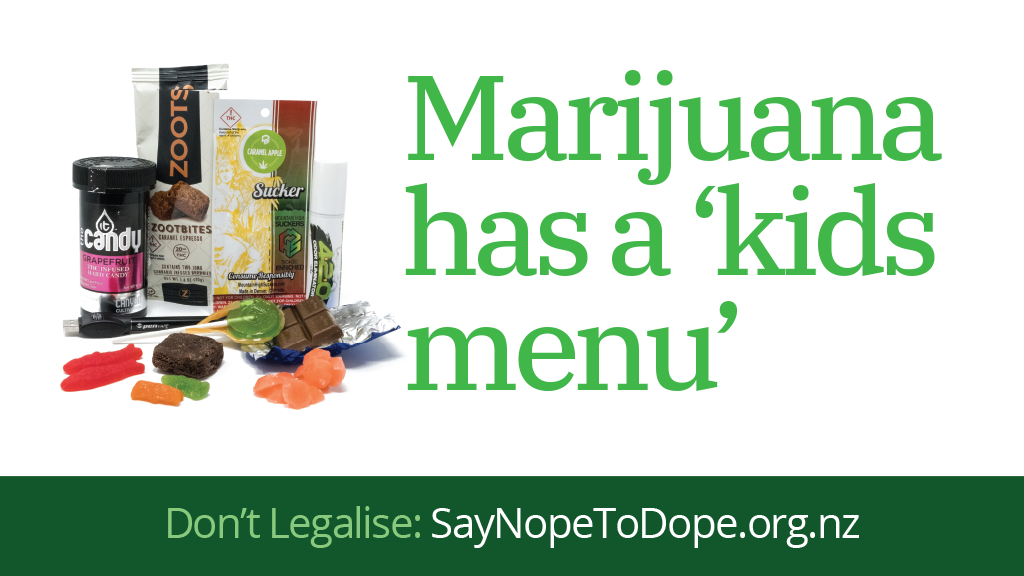



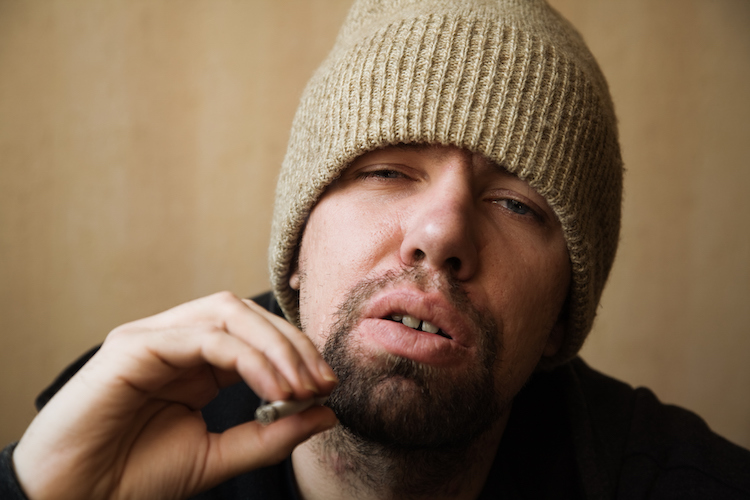


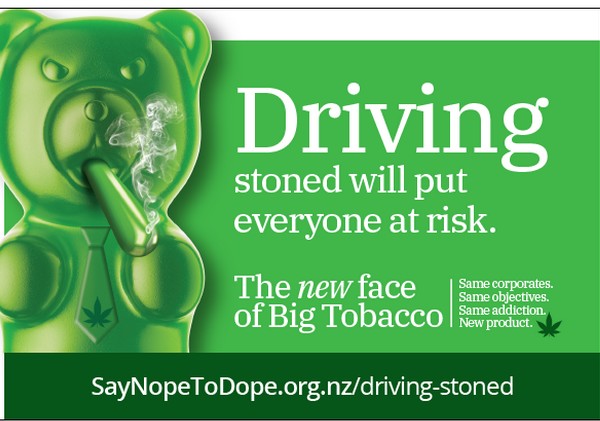

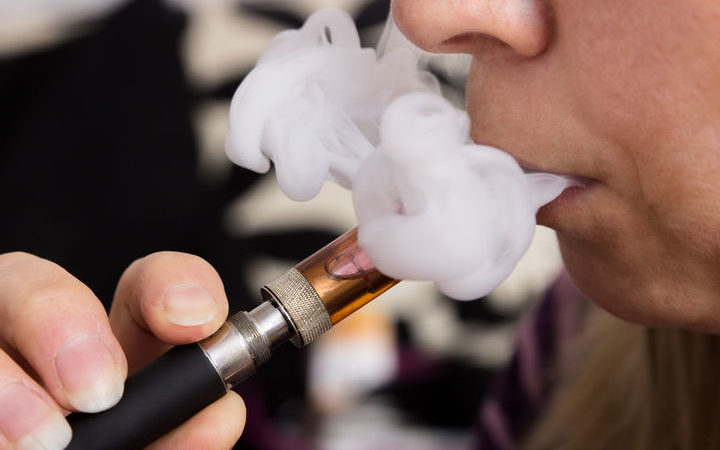

 On Friday, Radio NZ
On Friday, Radio NZ 